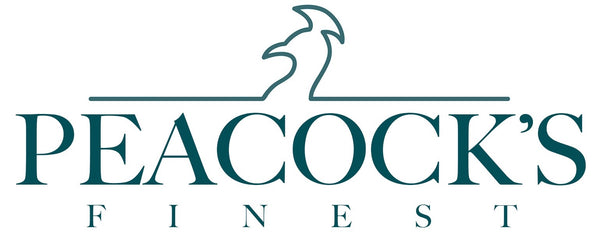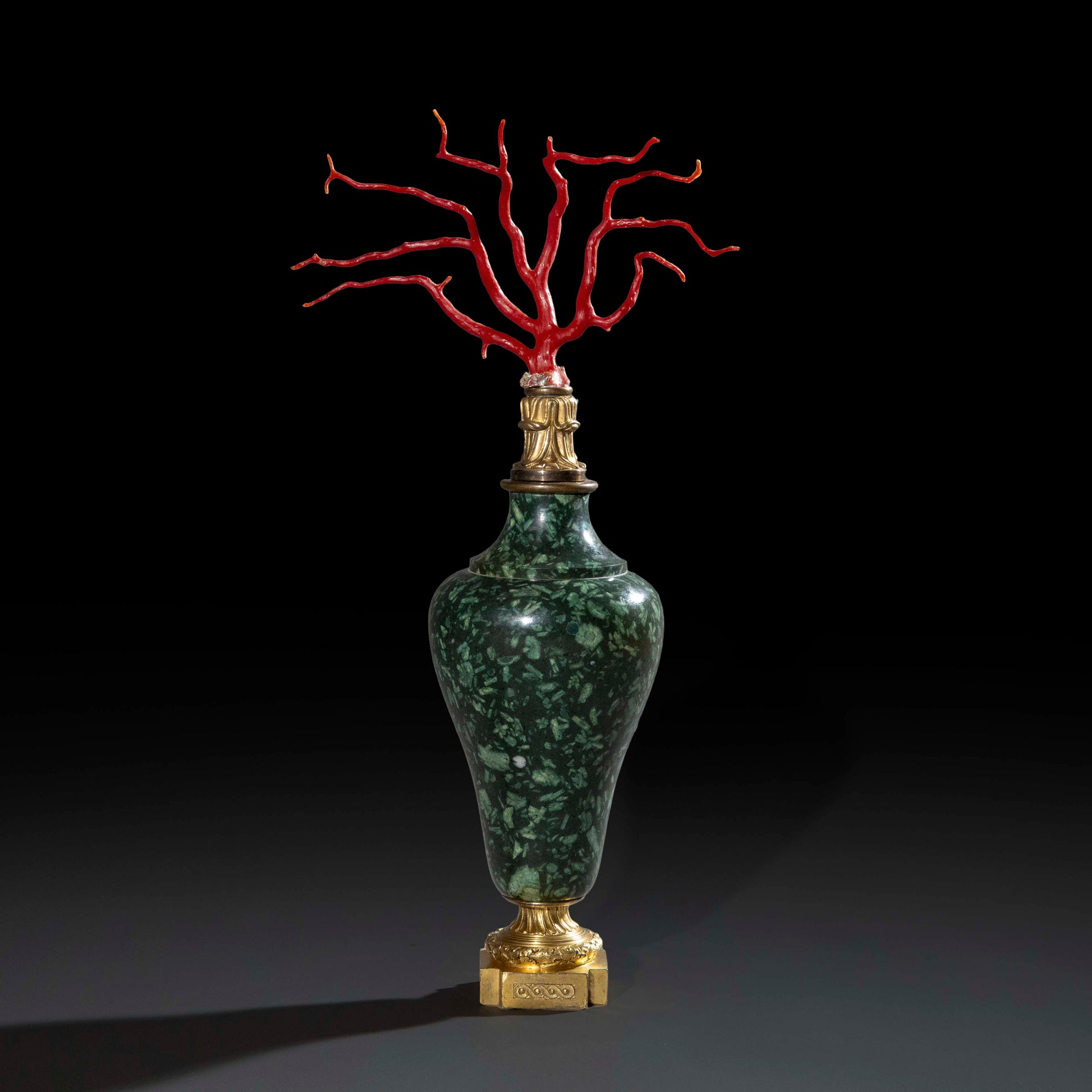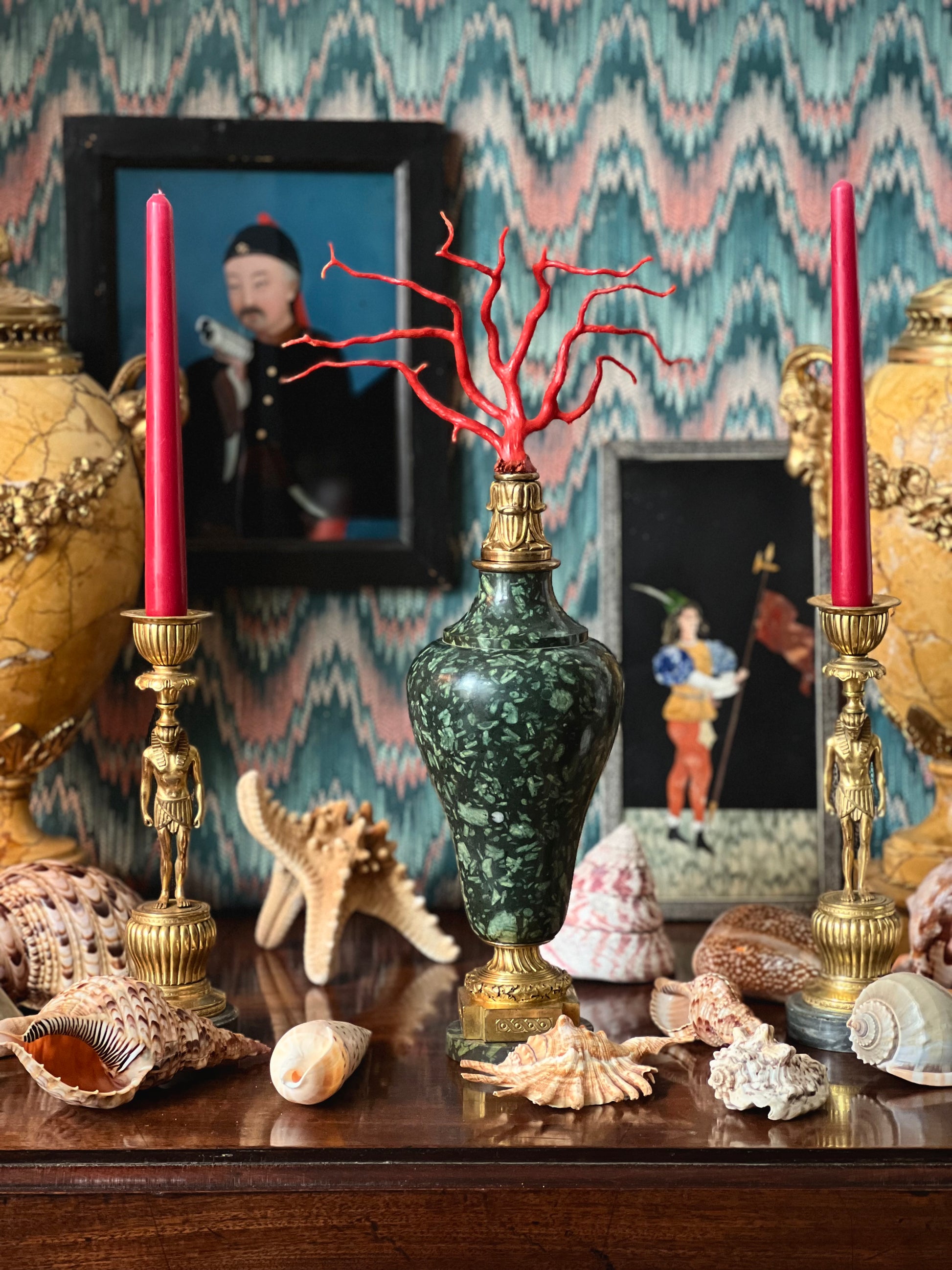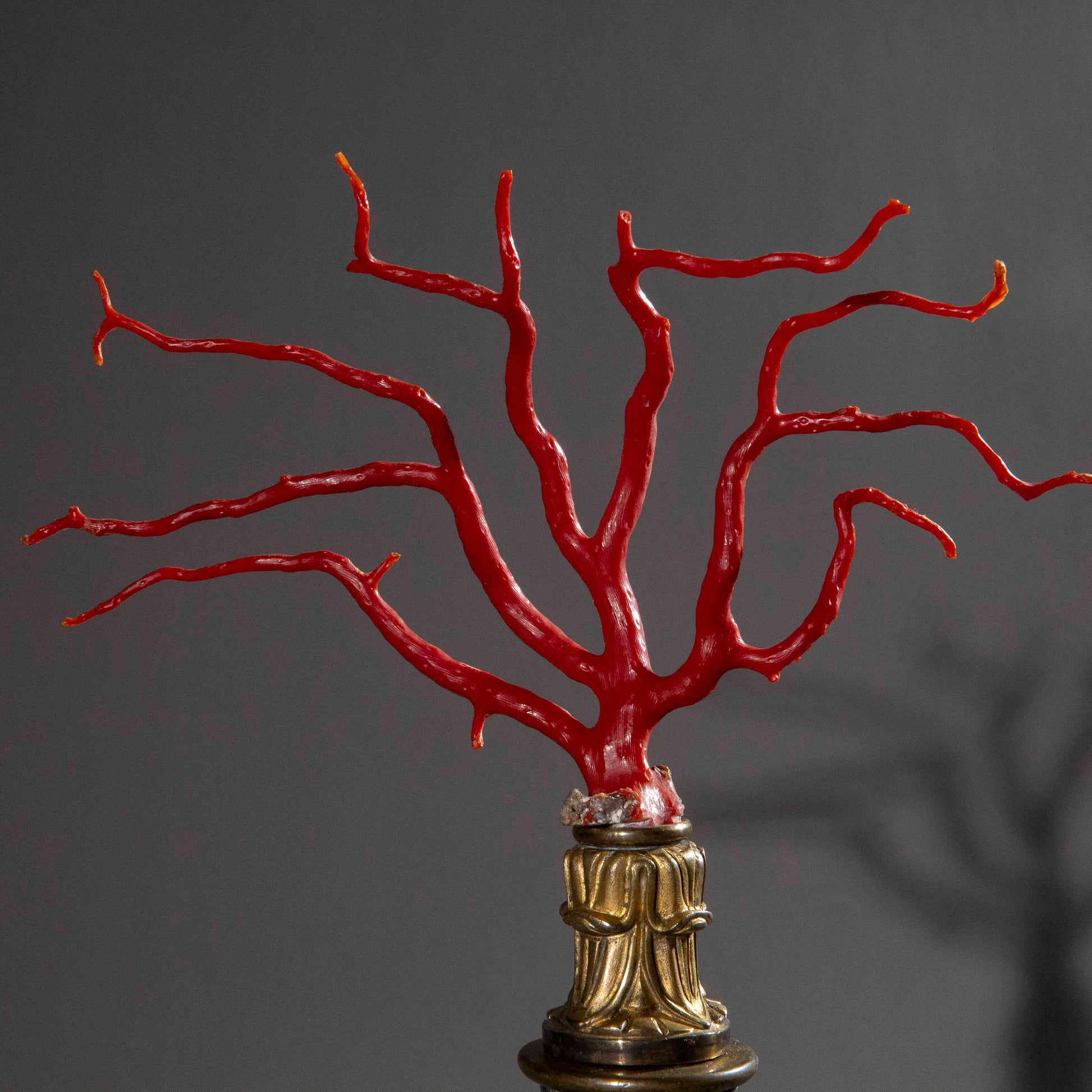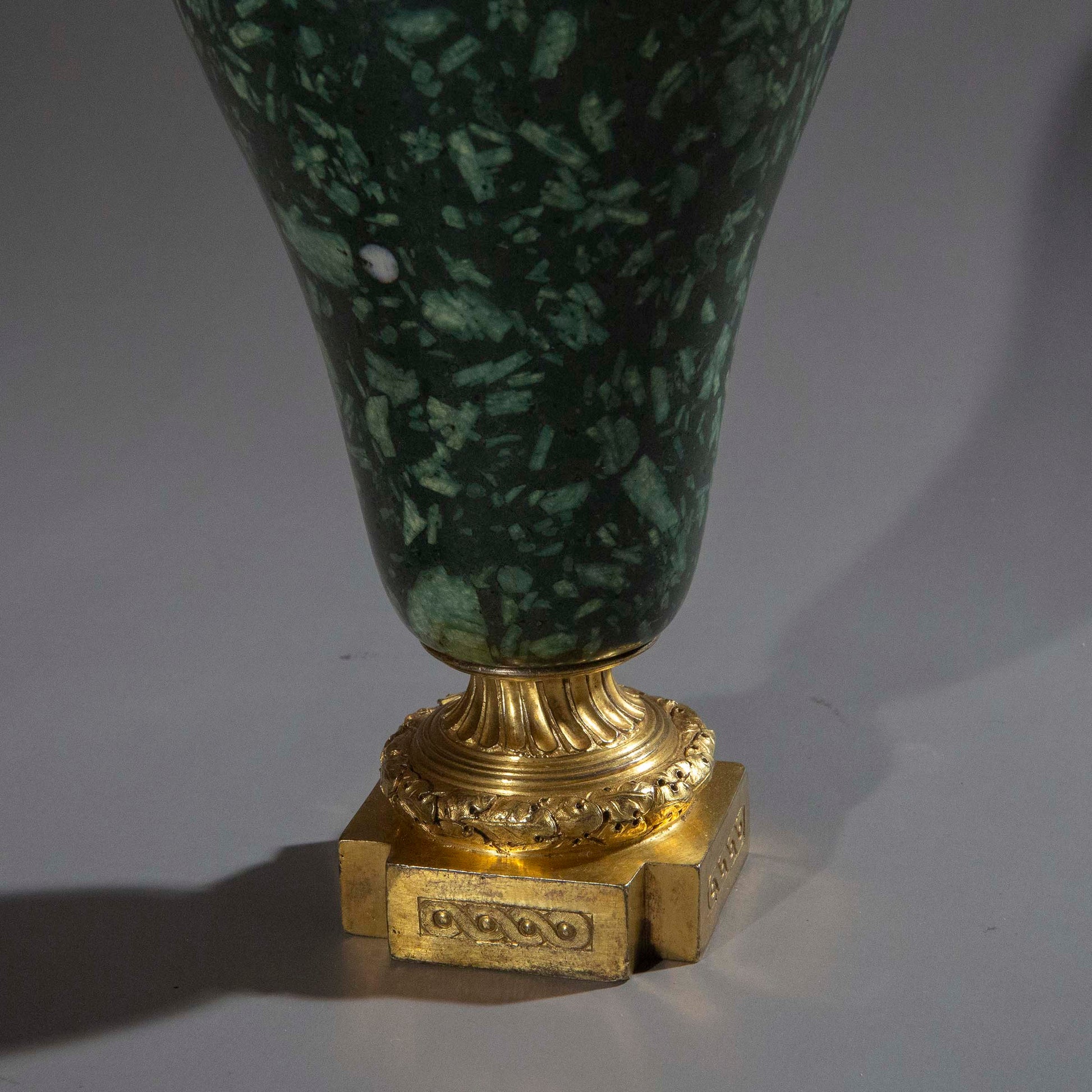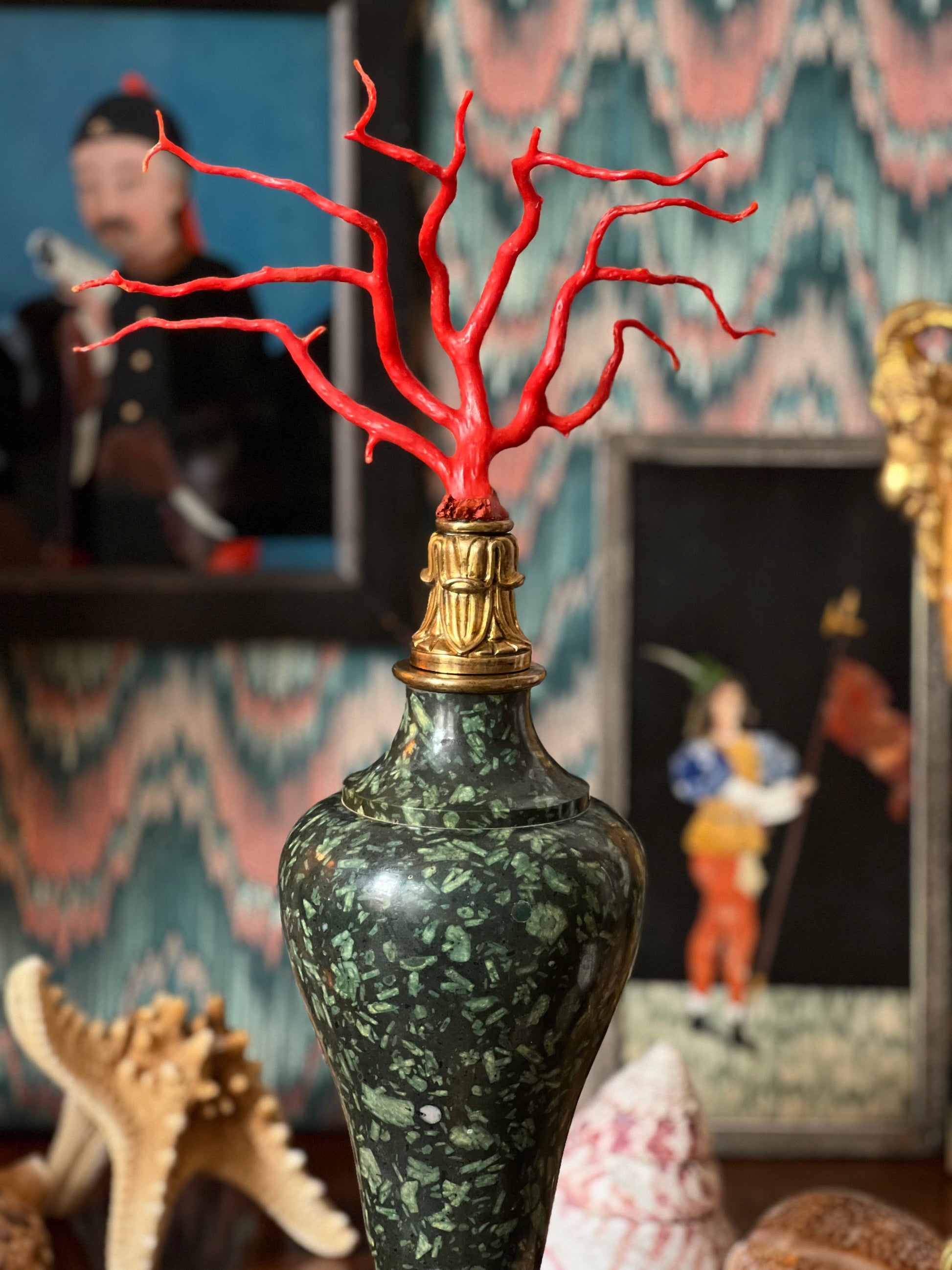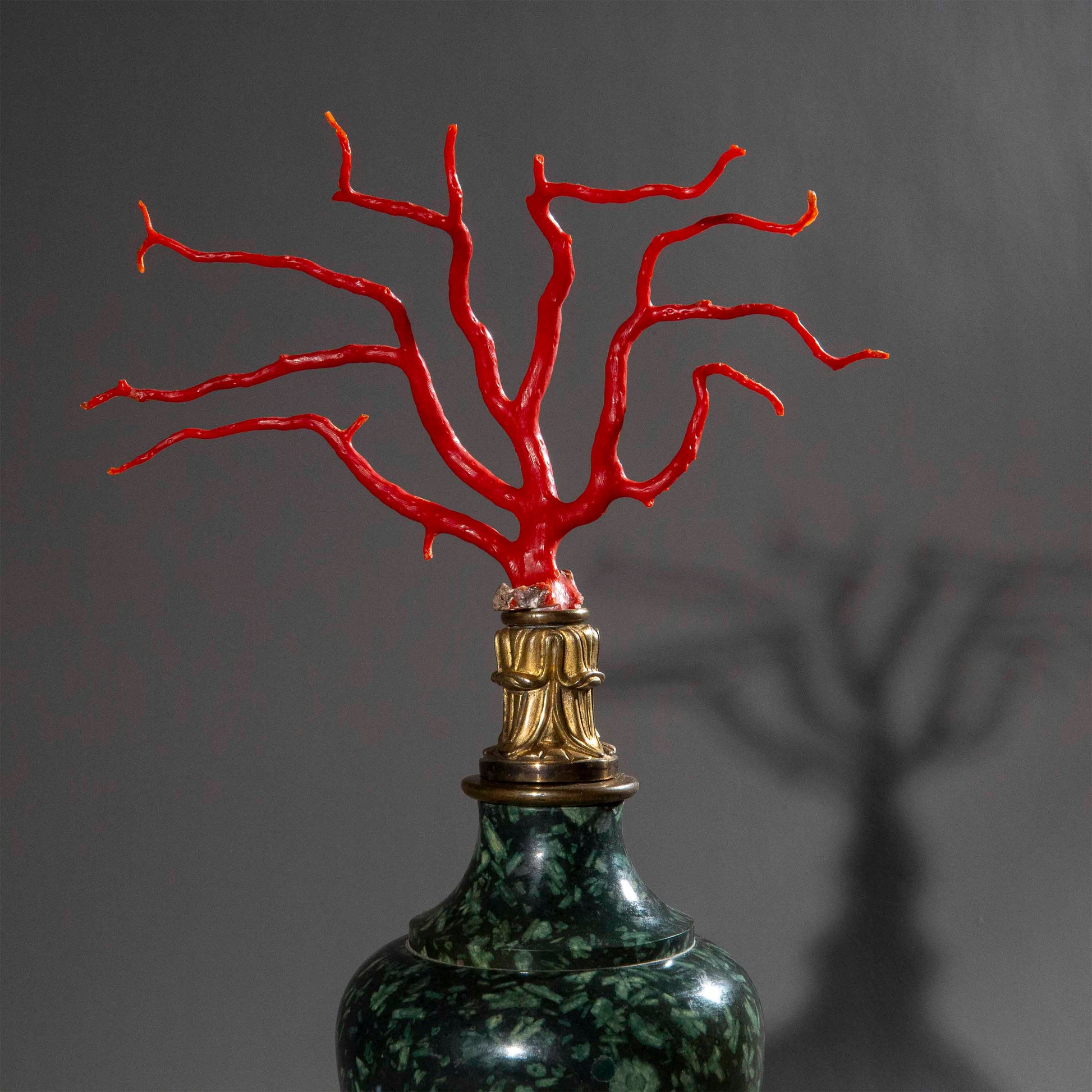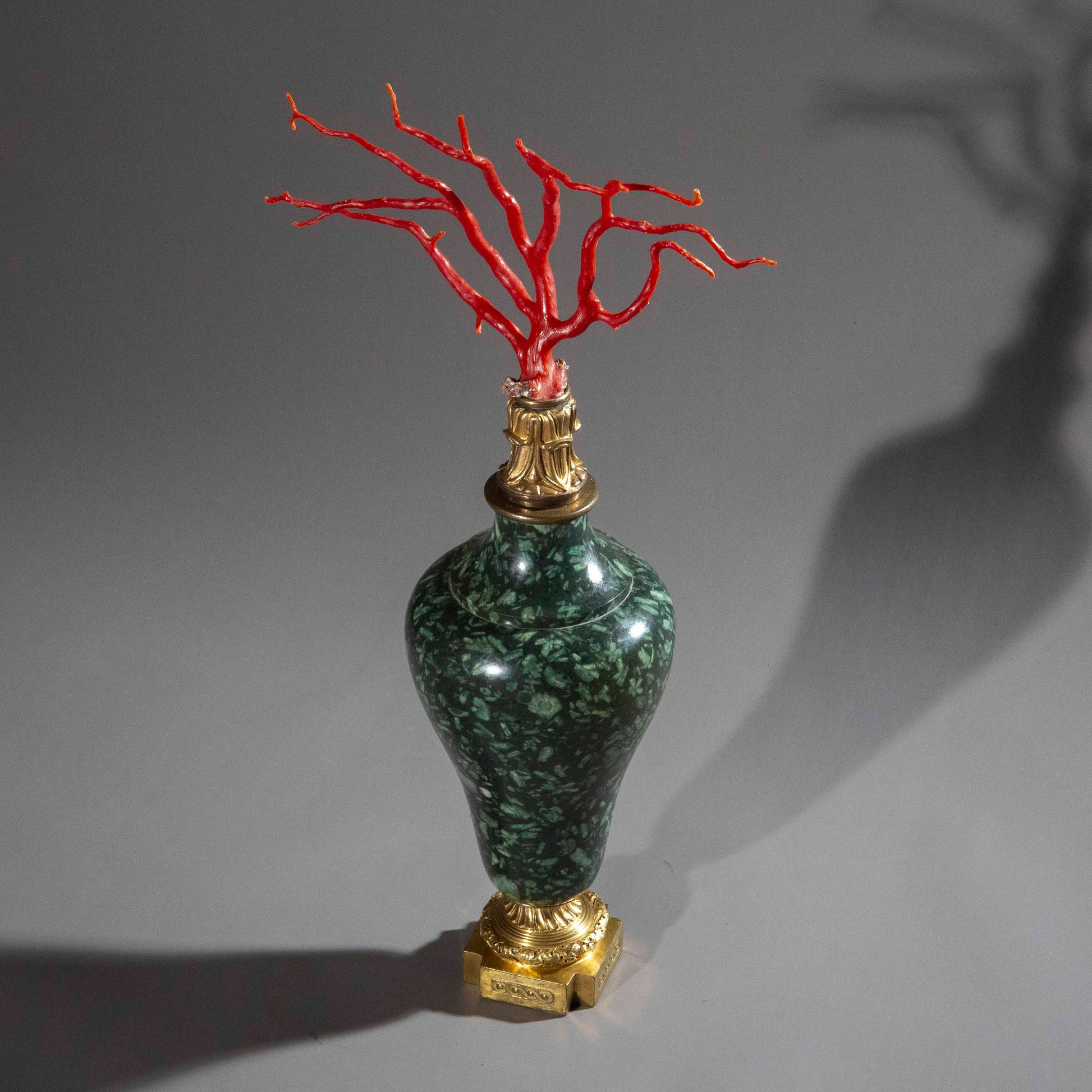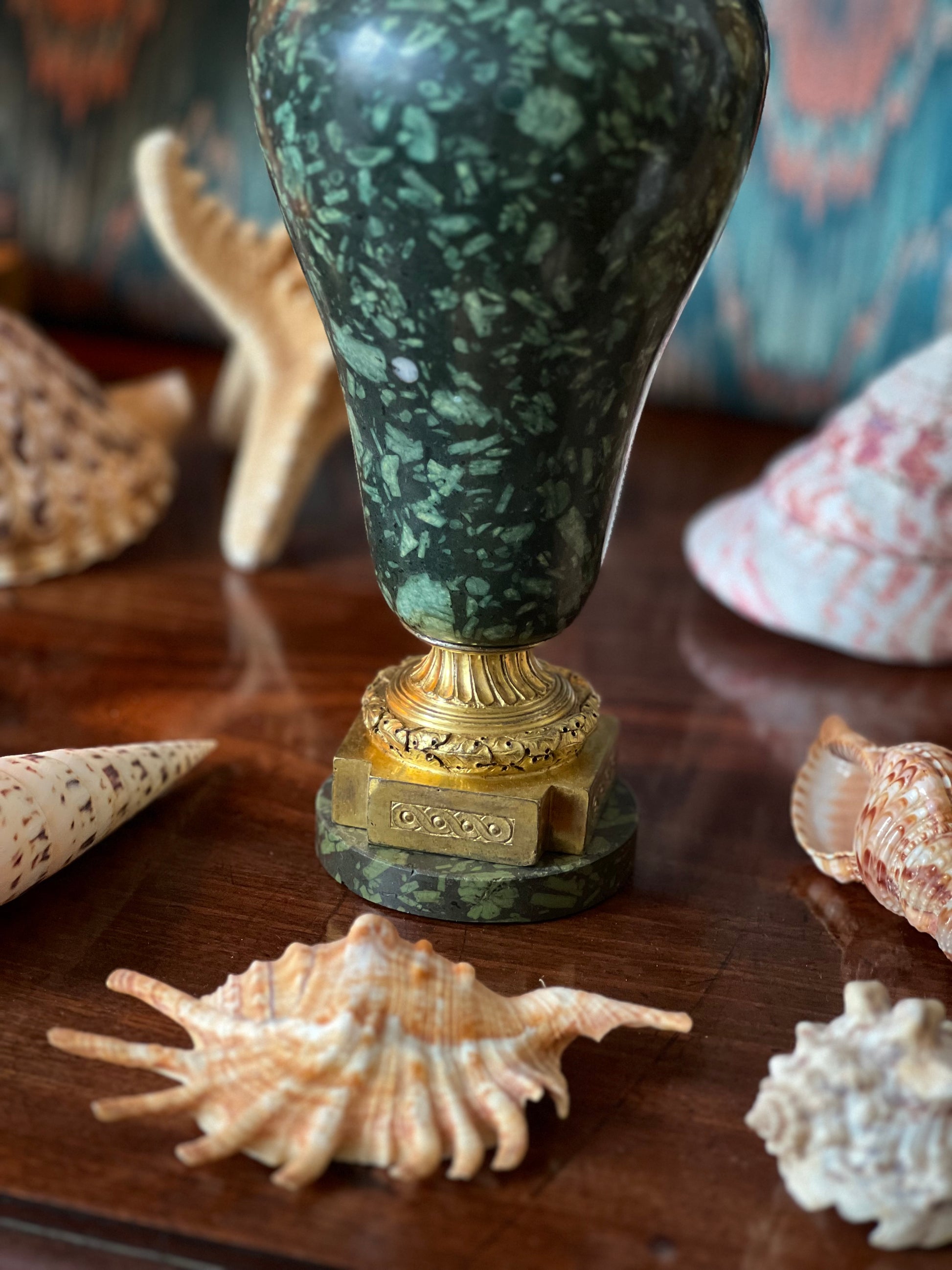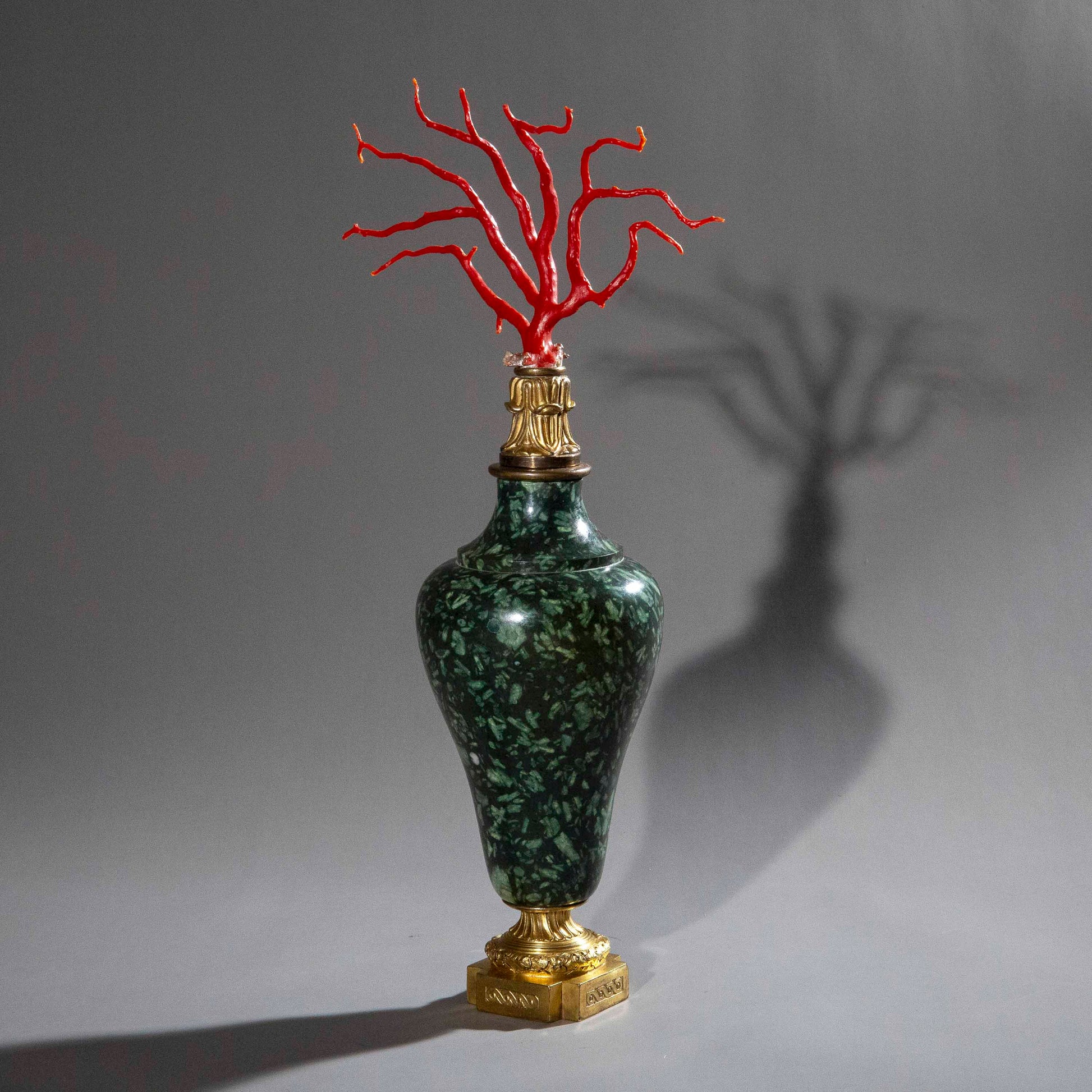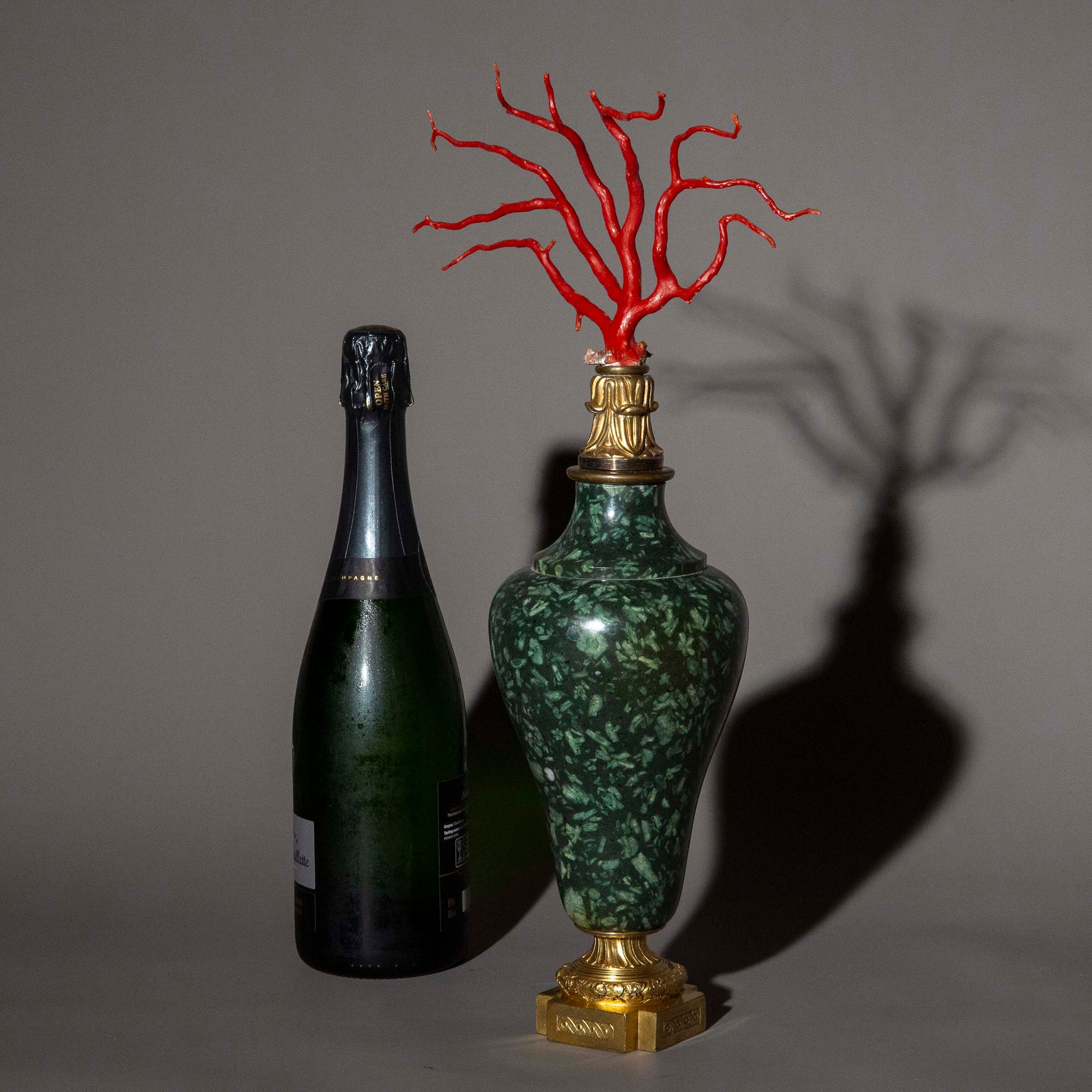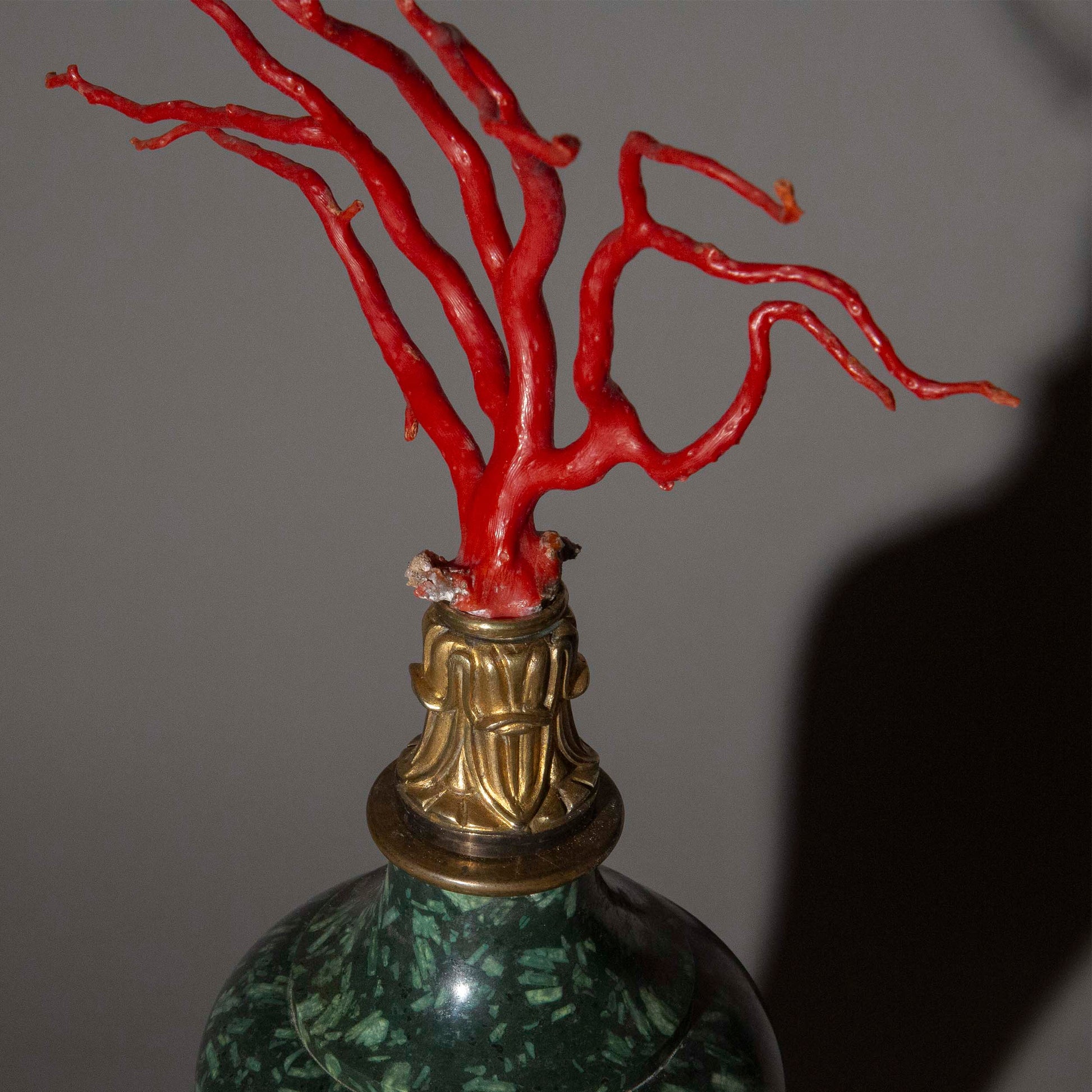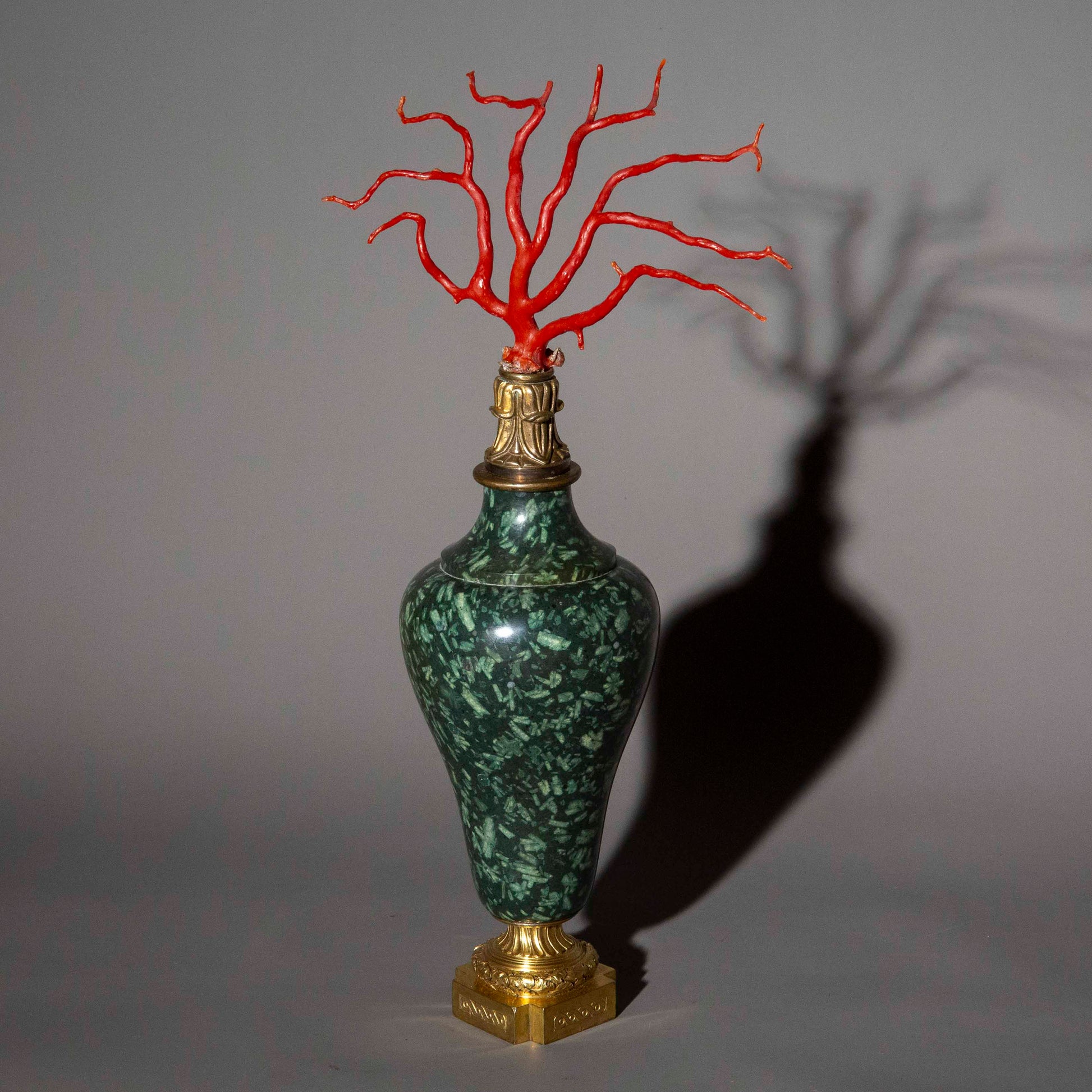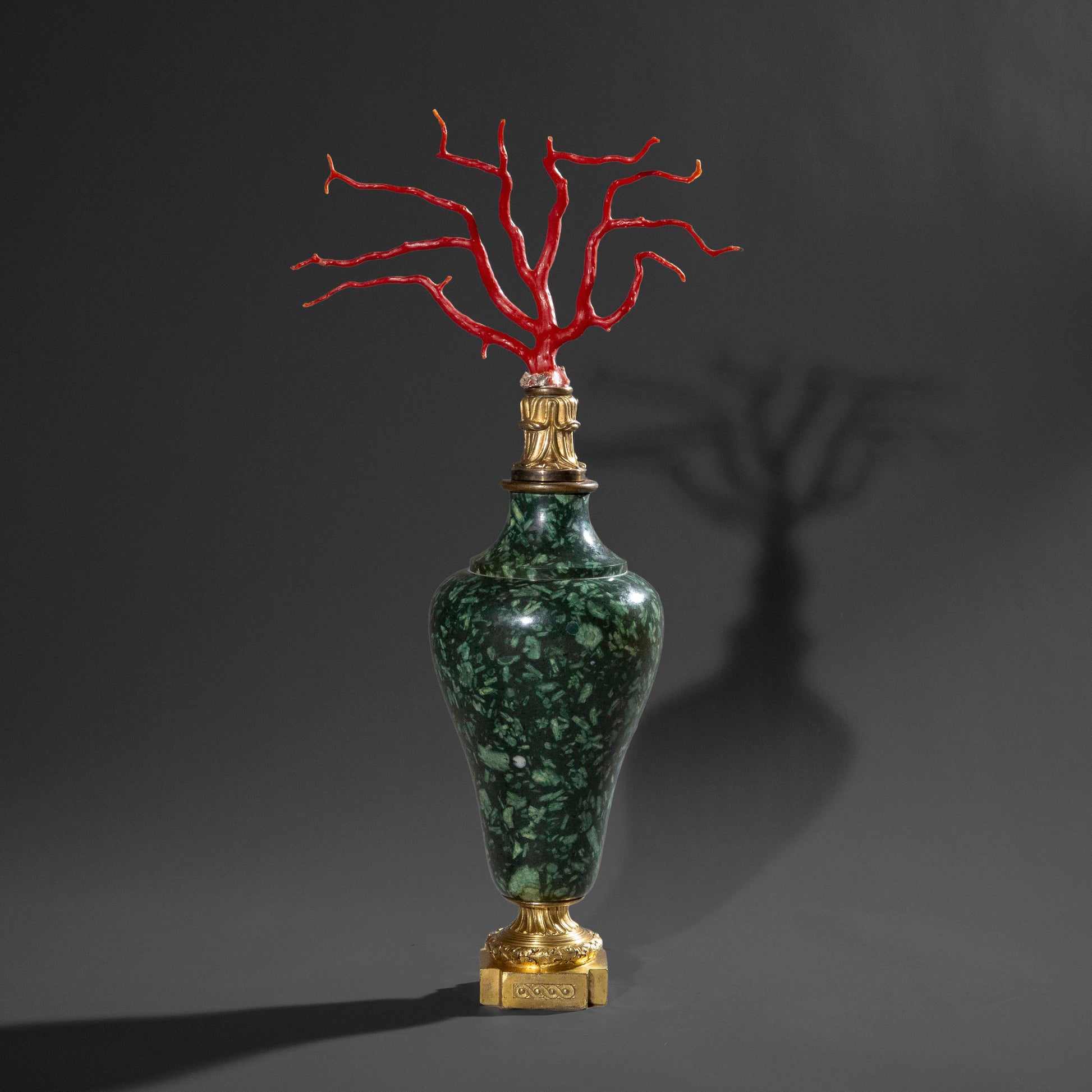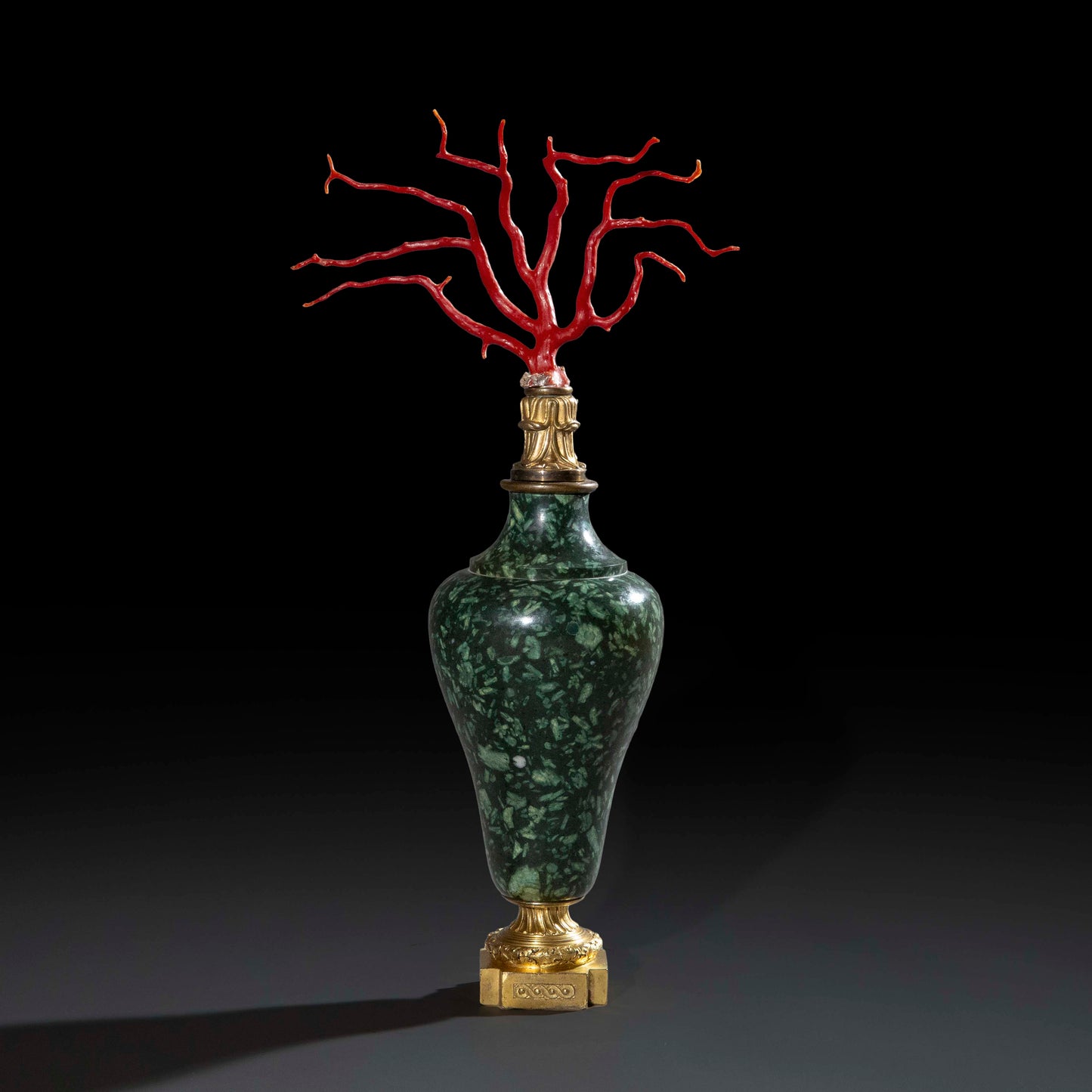

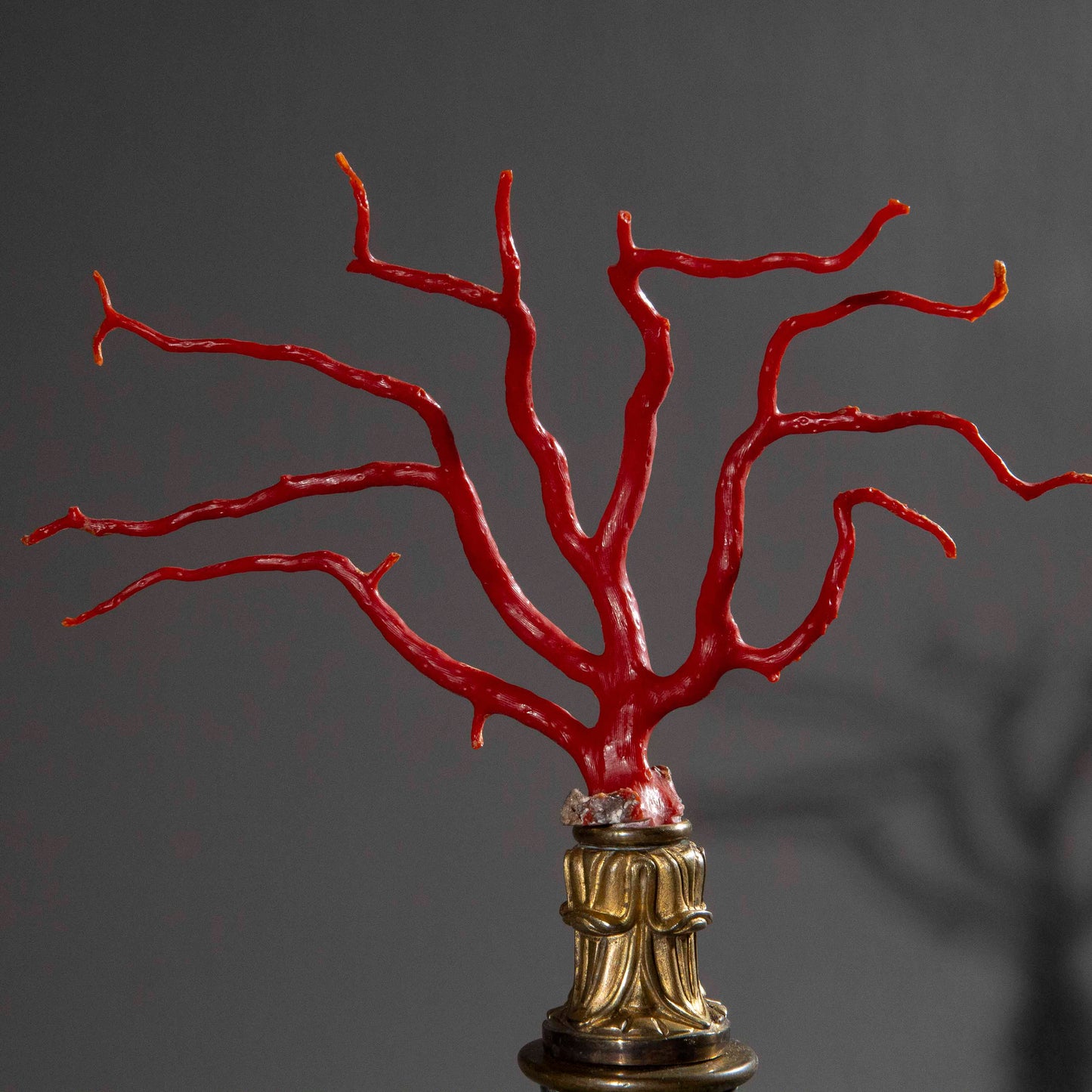
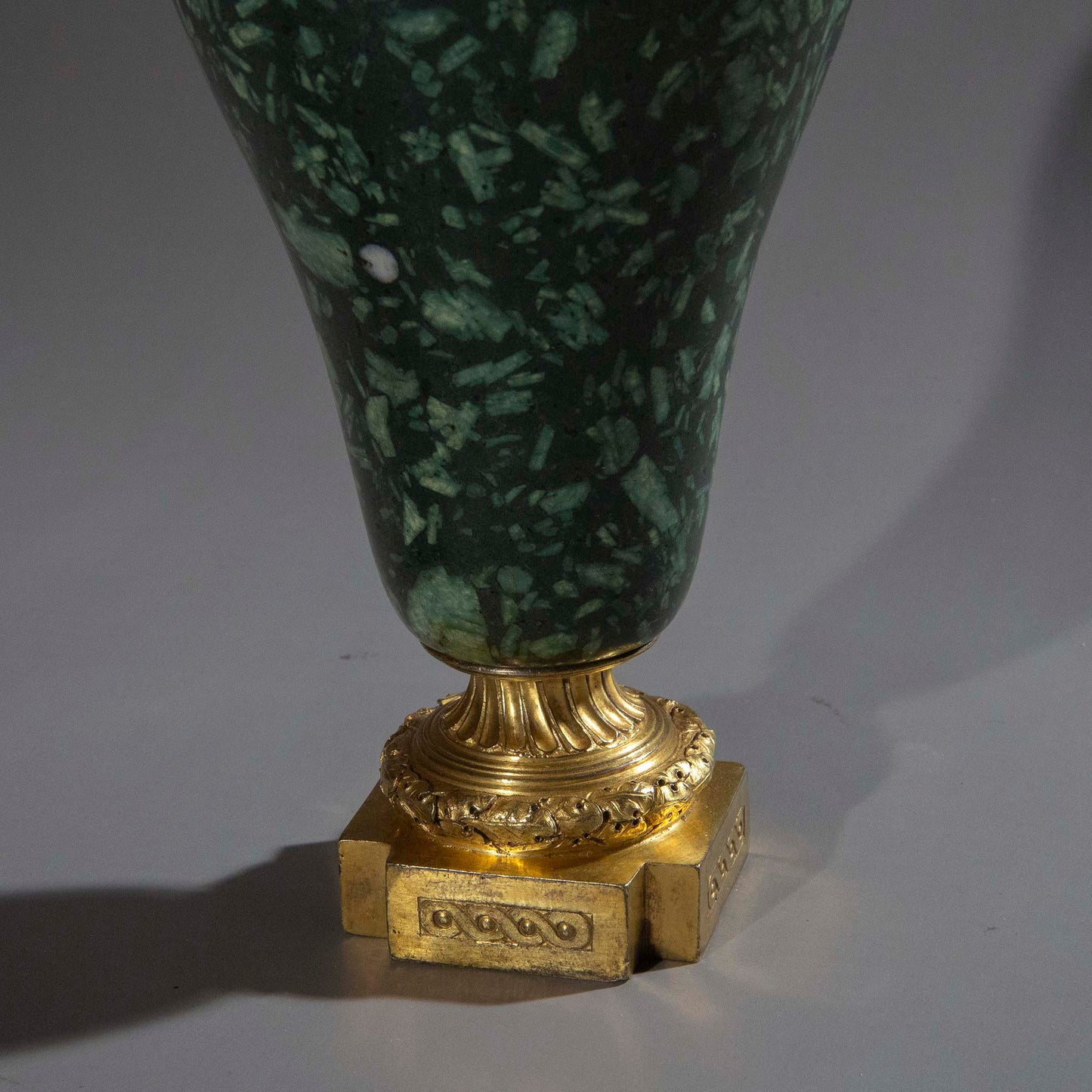
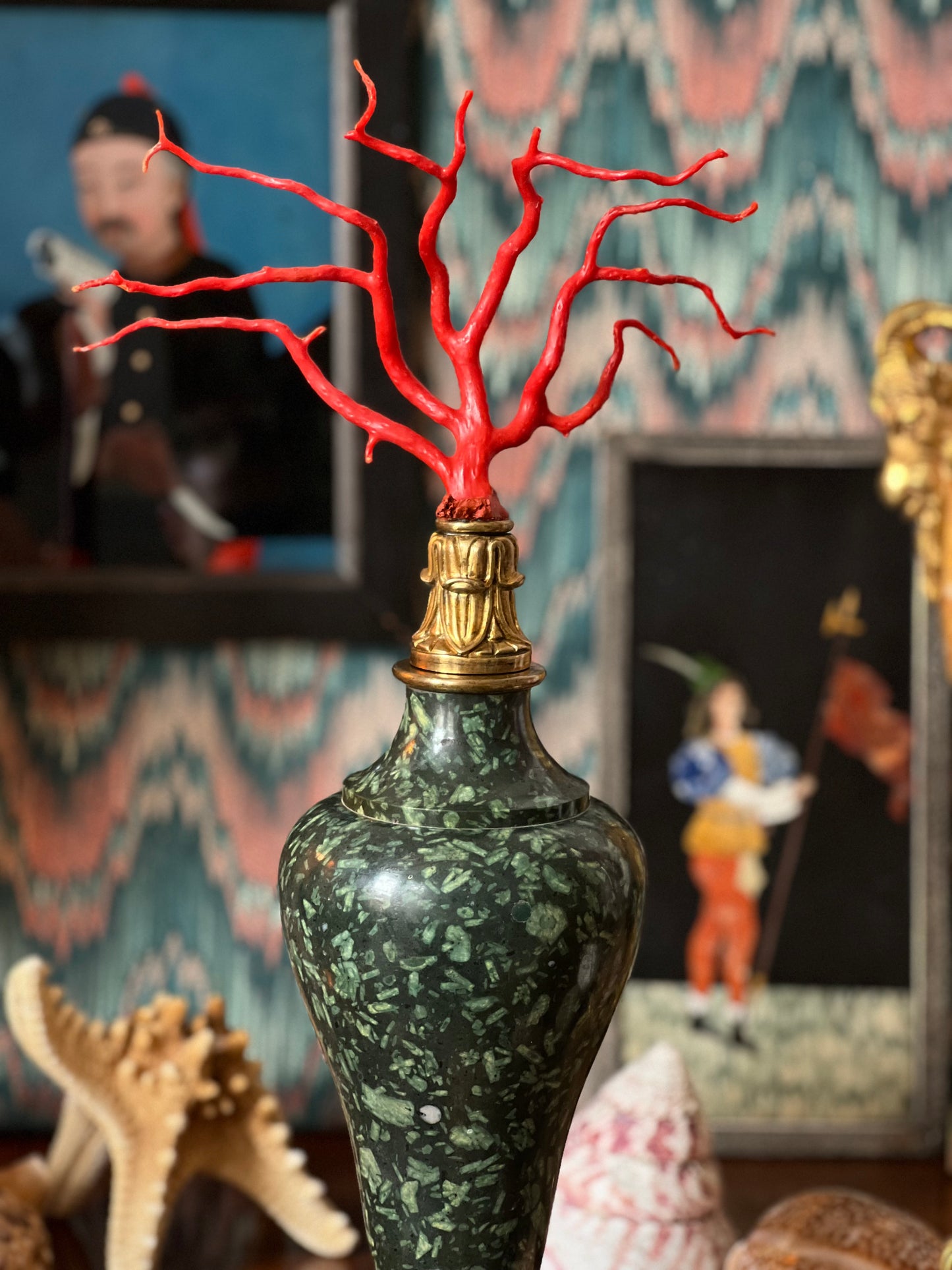
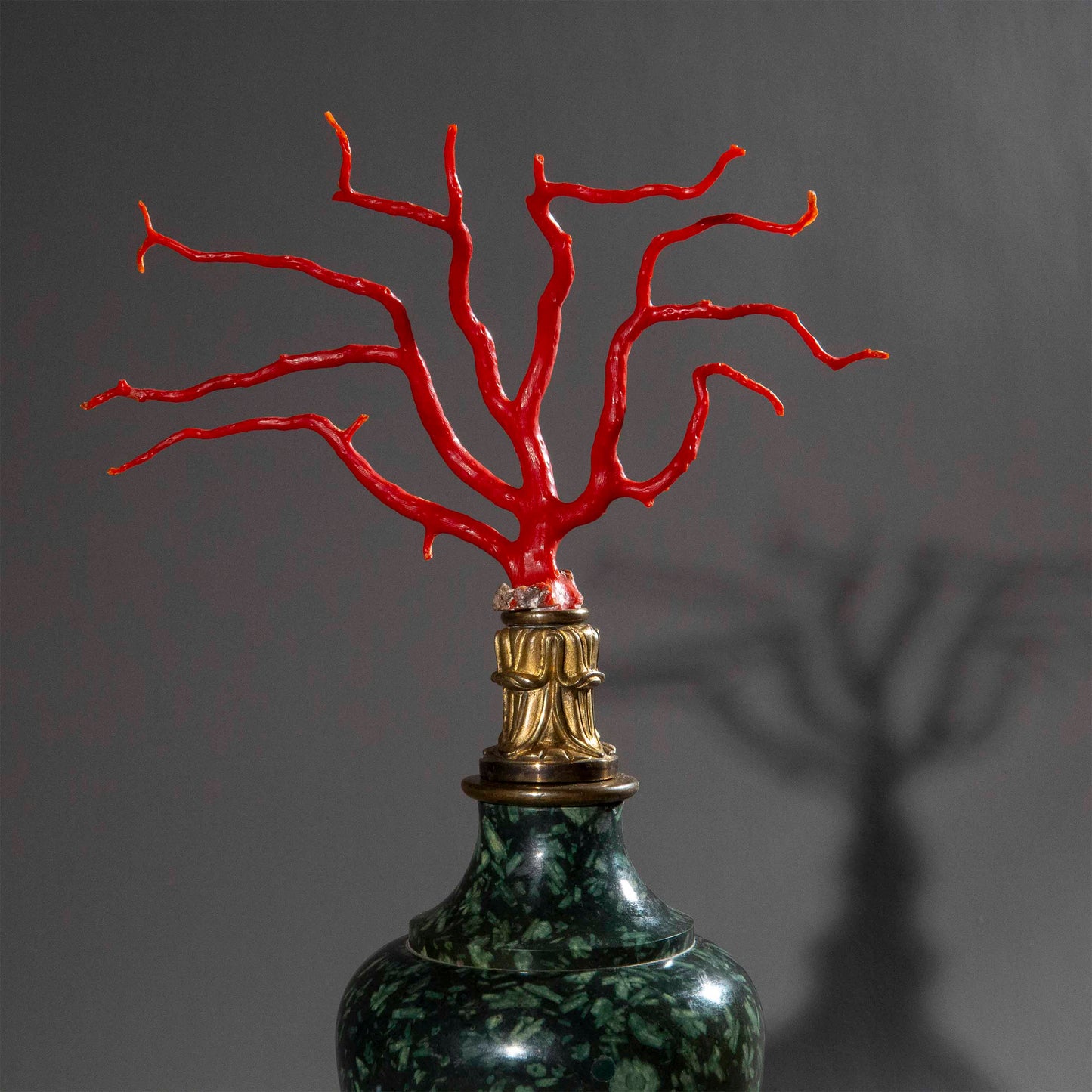

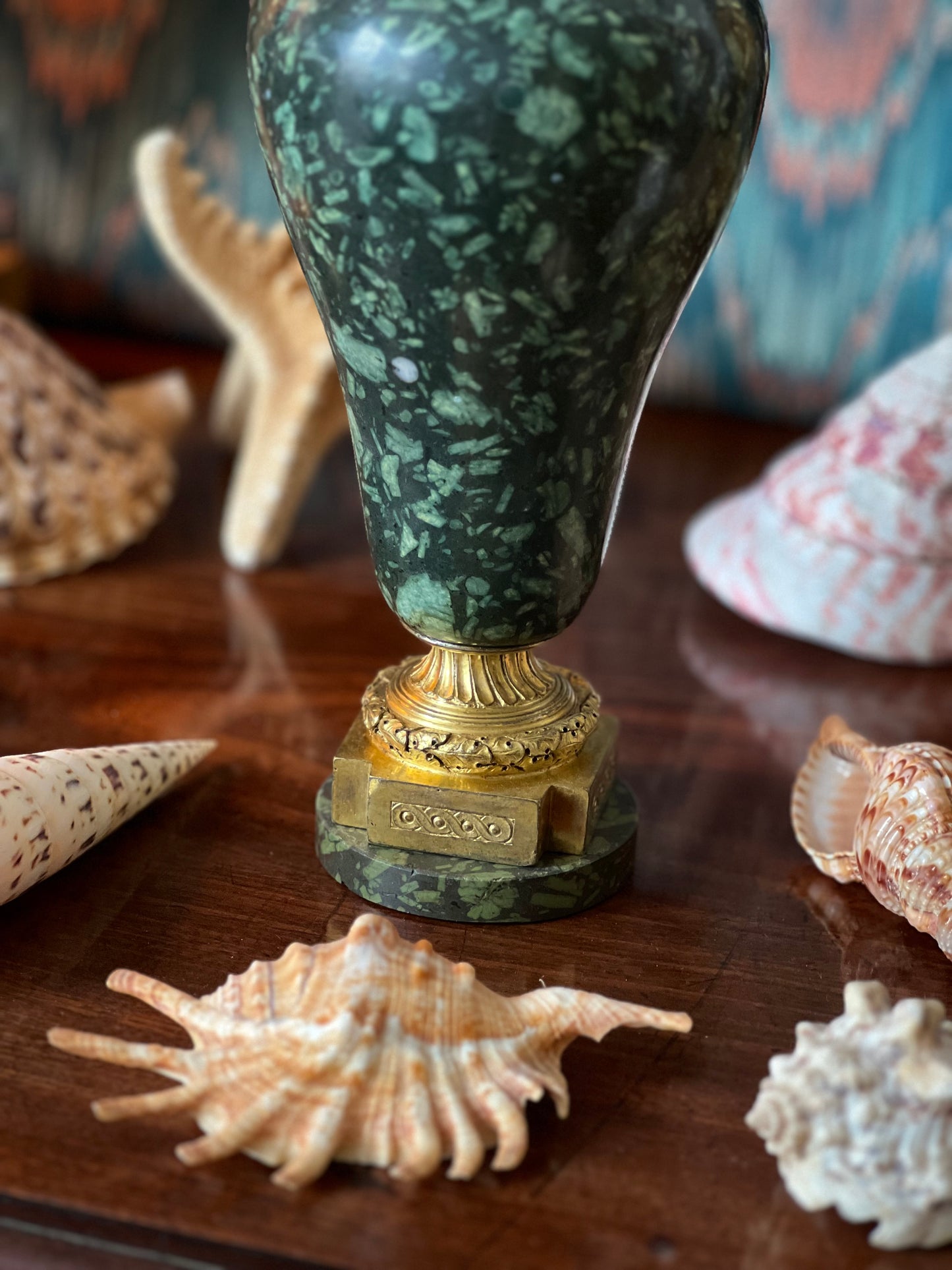
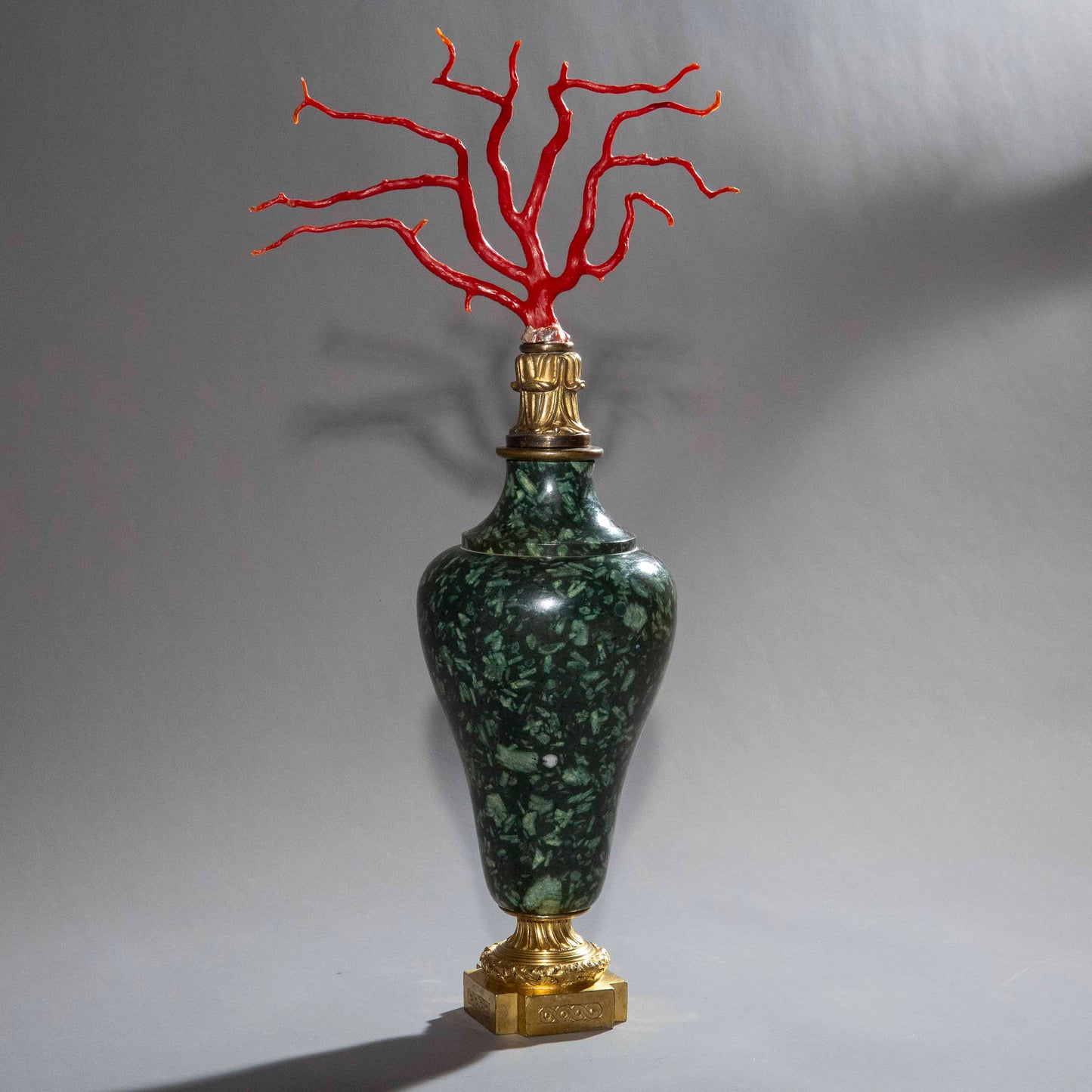
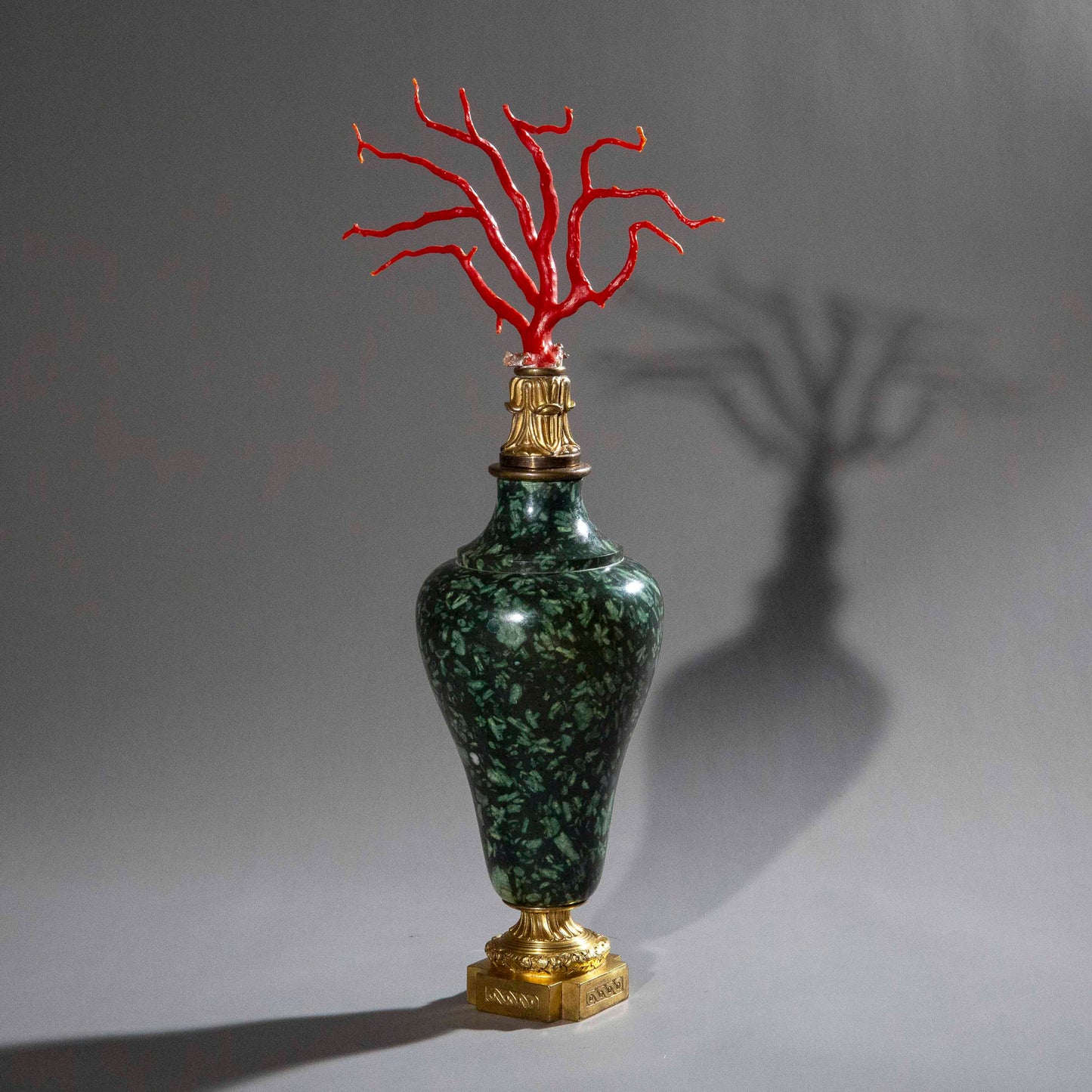
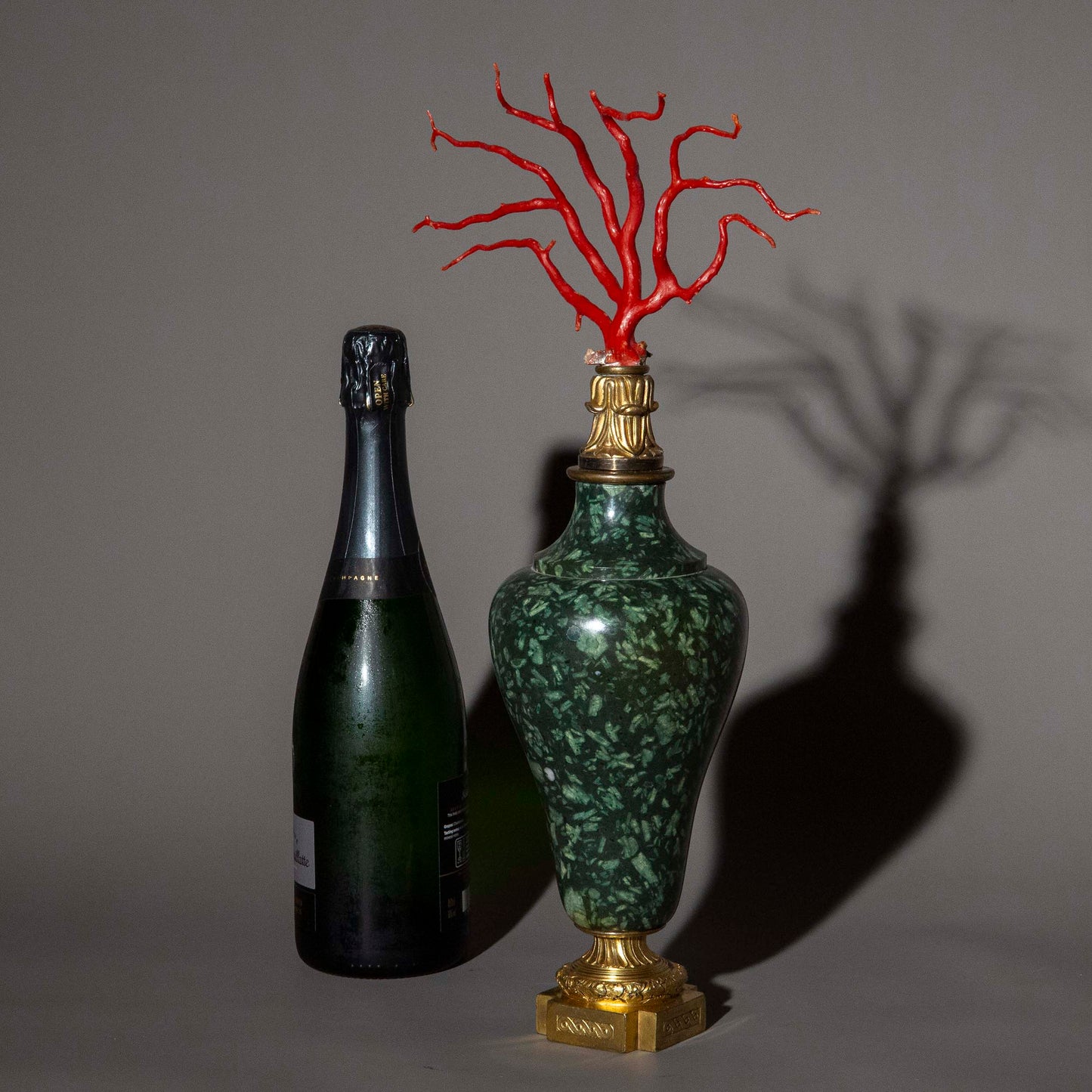
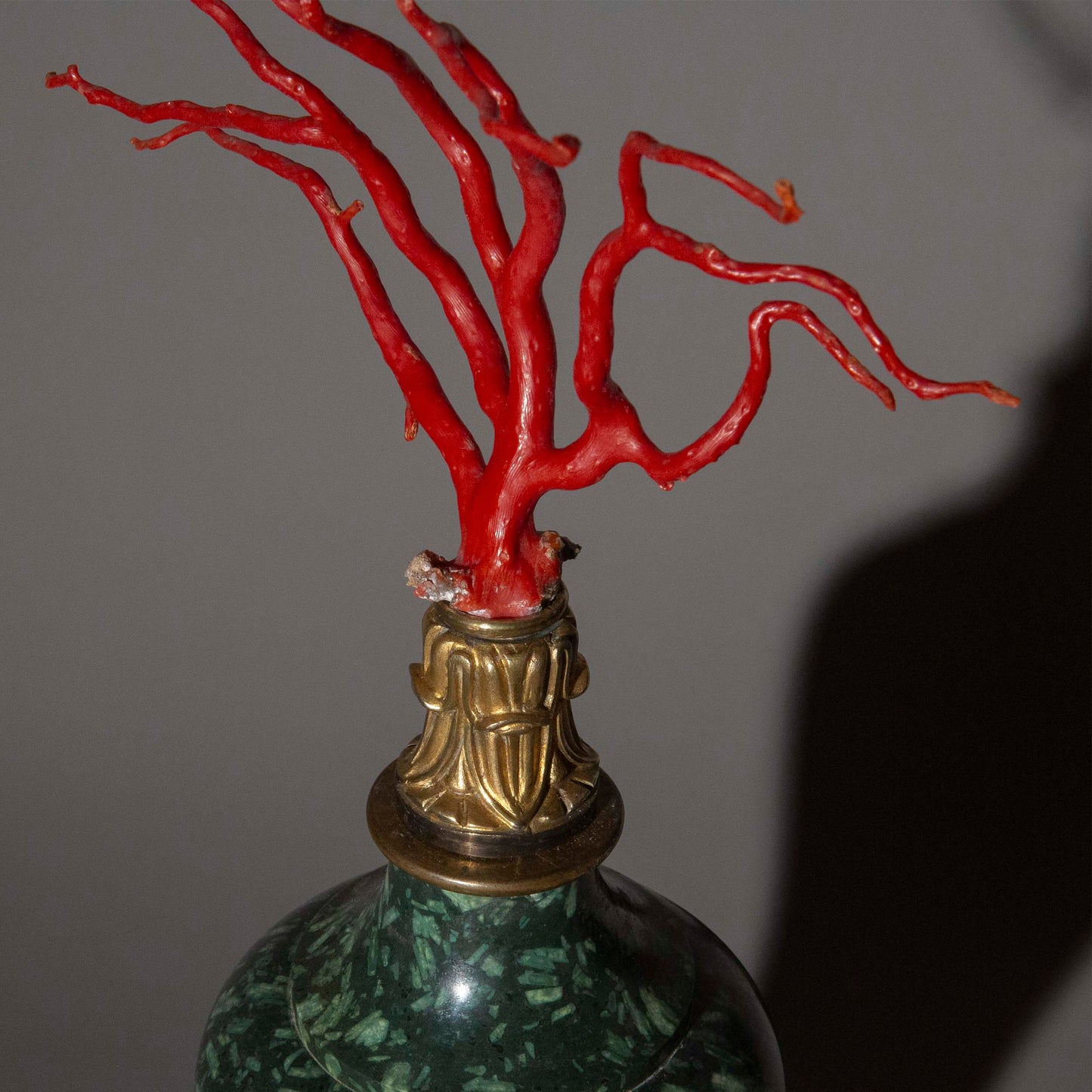
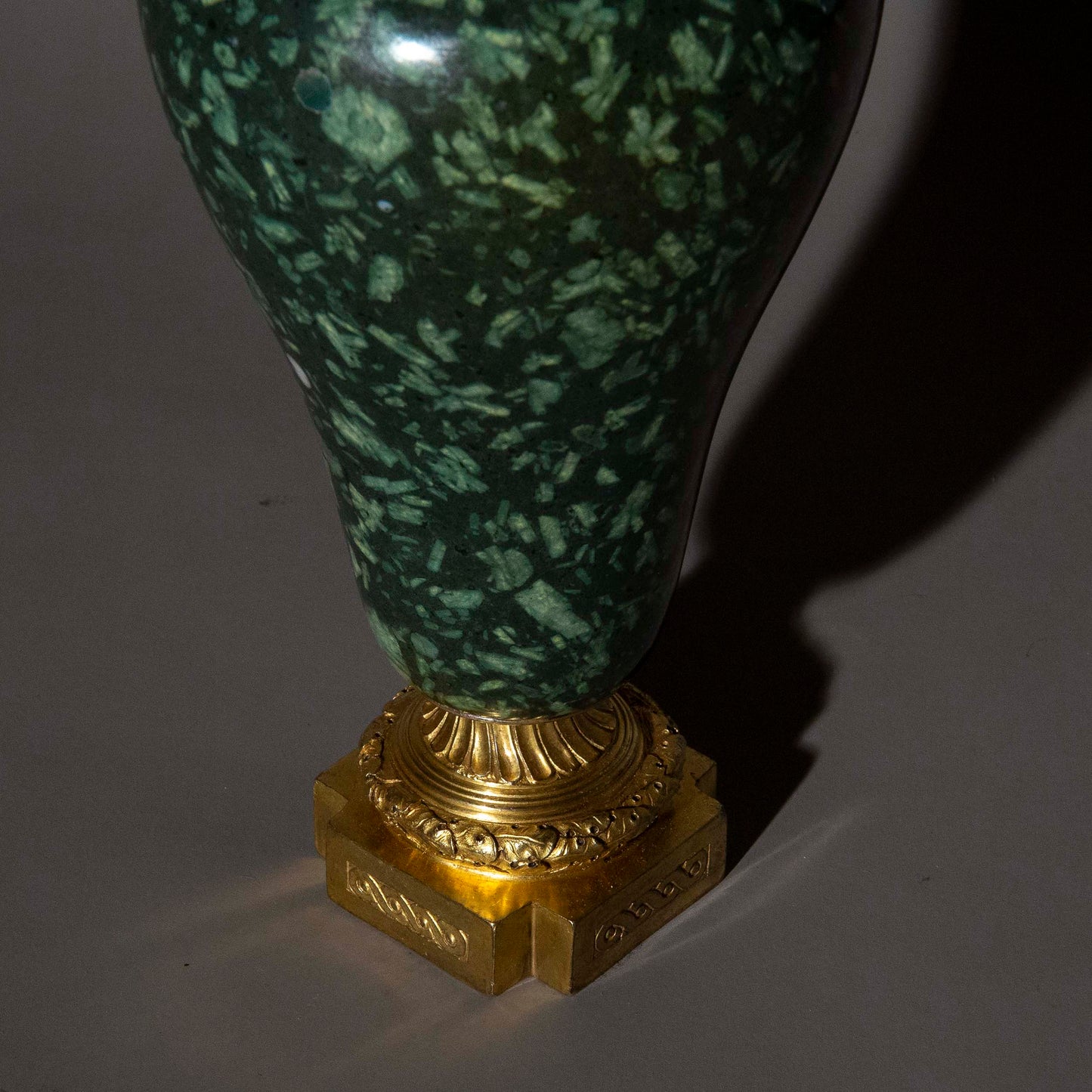
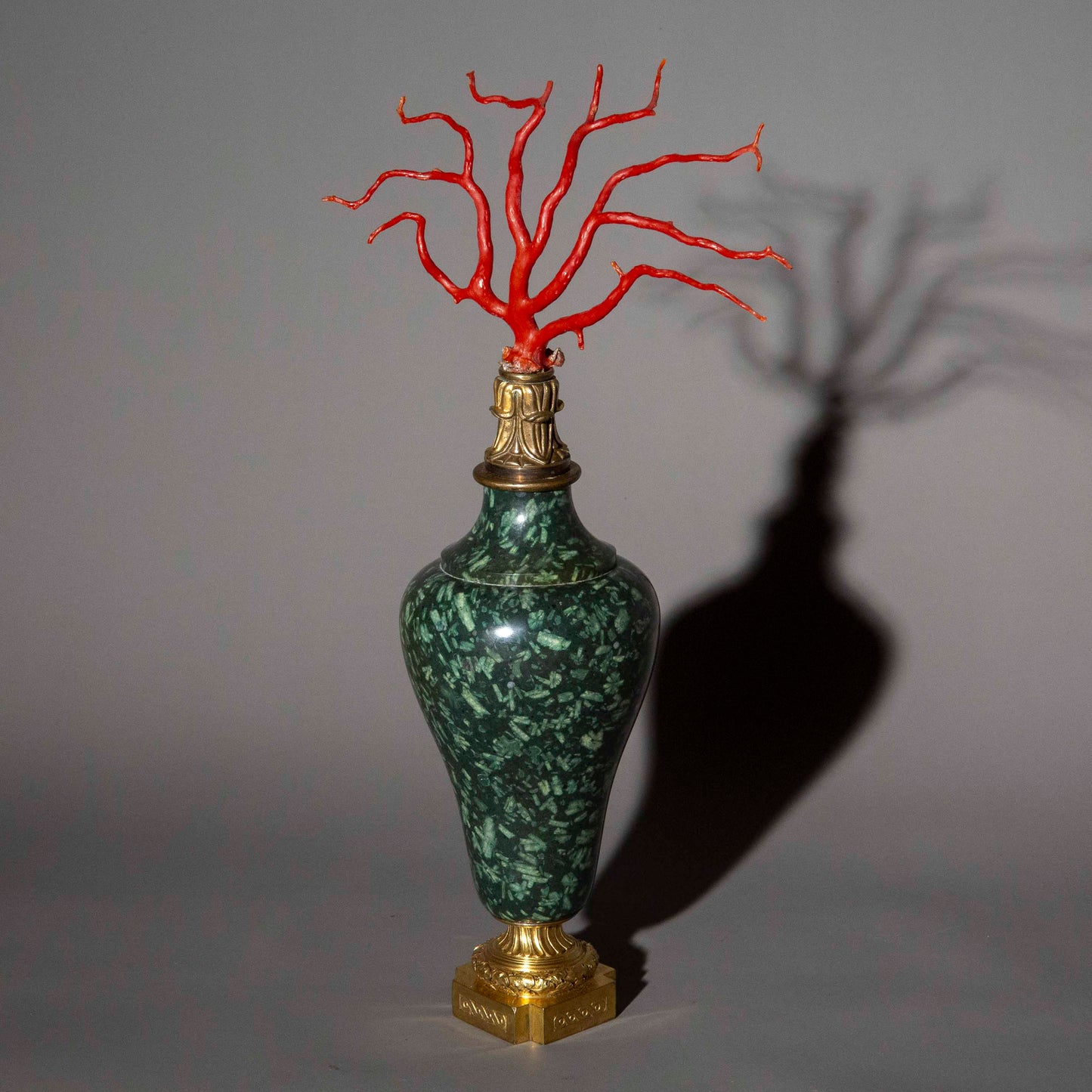
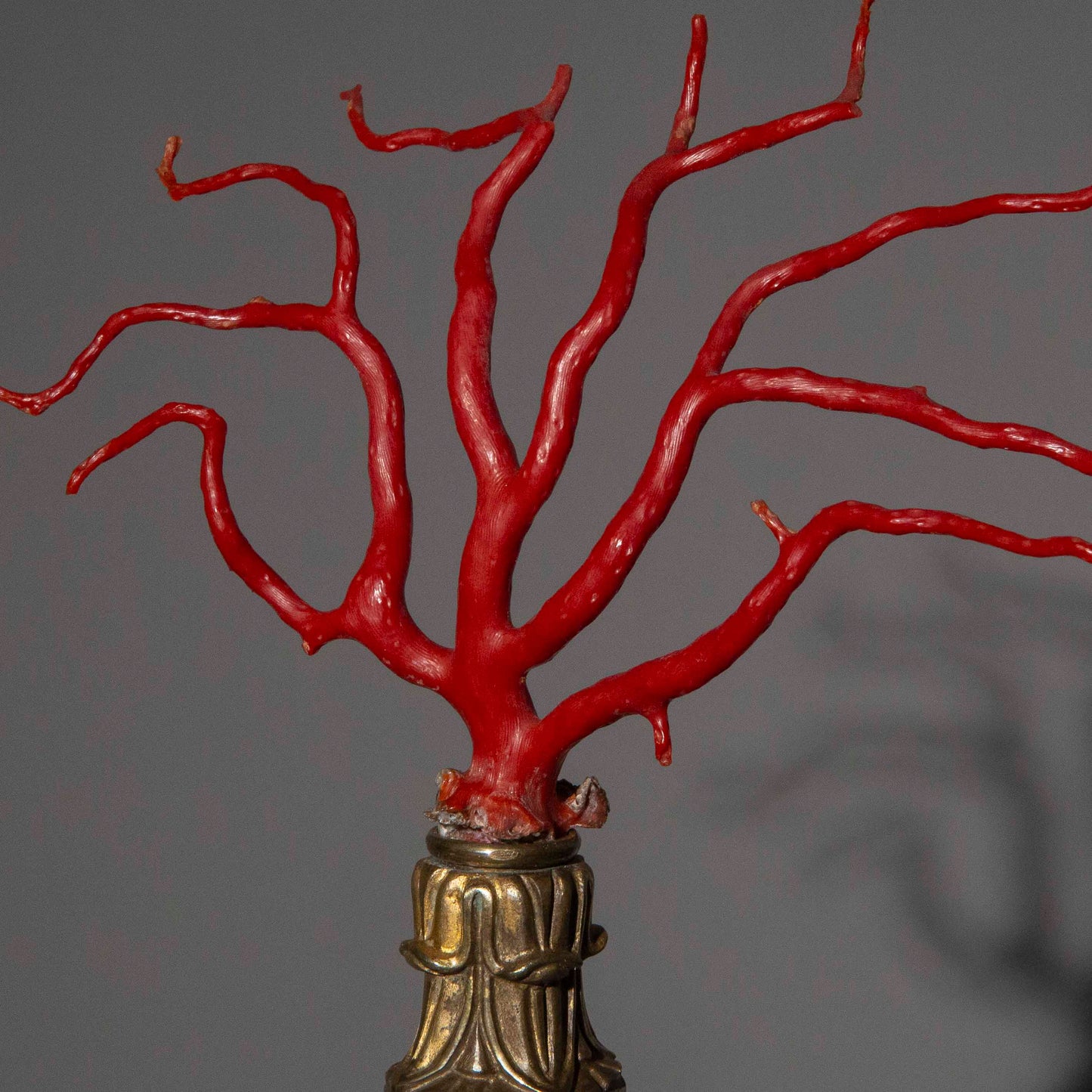
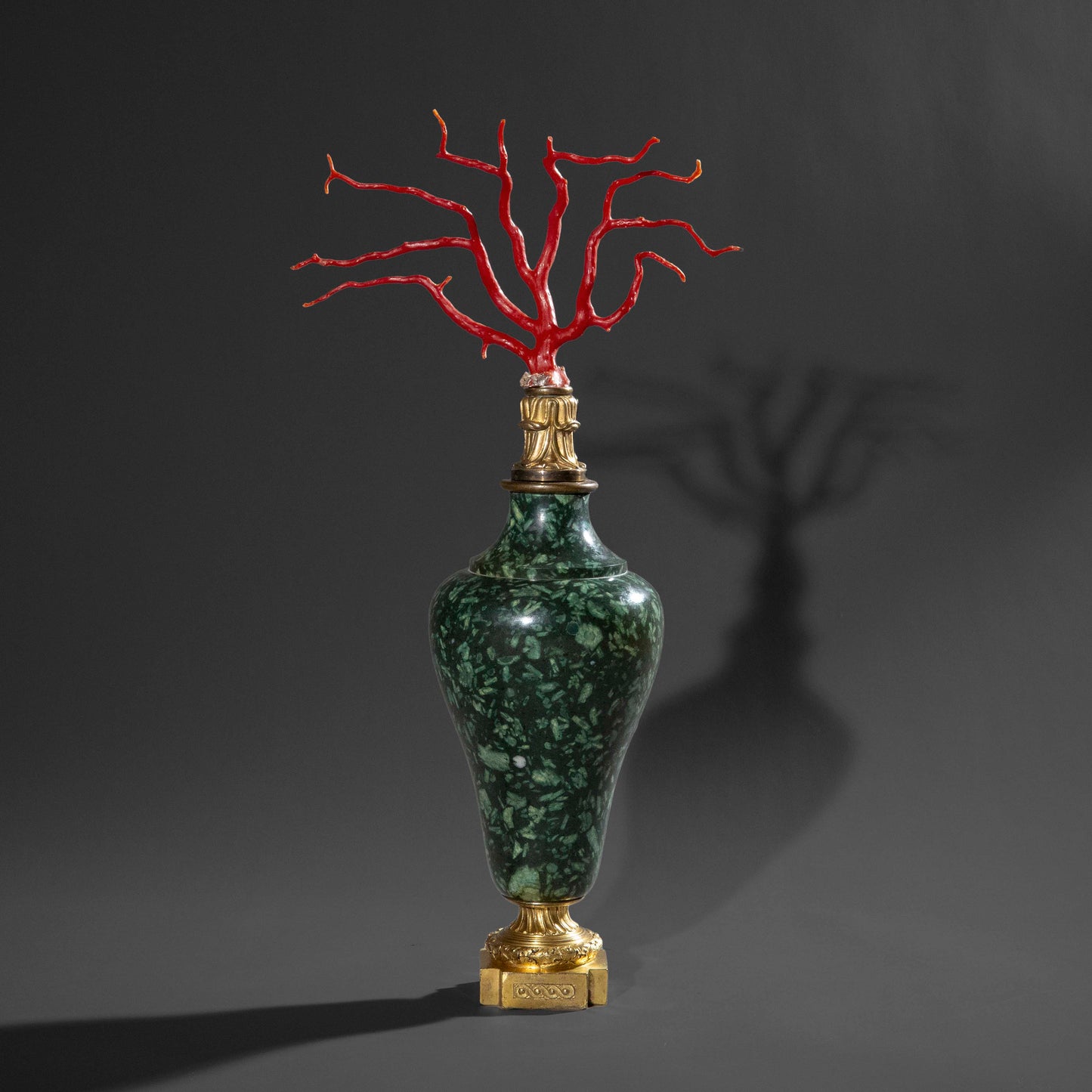
An exceedingly rare and sculptural red Mediterranean coral (Corallium rubrum) tree (i.e. a large single pieces of red coral), presented on an elegant, ormolu-mounted and extremely rare large solid agate-speckled green porphyry (Porfido Verde Agatato) urn. Italy, 18th century and later.
Why we like it
This precious and wonderfully decorative object evokes the 17th-century spirit of curiosity and ‘learned entertainment,’ perfectly embodied in the concept of a ‘Wunderkammer’ or ‘cabinet of curiosities.’ Such collections were carefully curated with natural history specimens, including minerals, exotic seashells, and antiquities, alongside scientific instruments. These cabinets were often dominated by aesthetic concerns and a marked predilection for the exotic.
In Renaissance cabinets of curiosities, precious red corals were among the most sought-after objects. The Roman poet Ovid (43 BC — 17 AD) describes the origin of coral in his famous Metamorphoses: “They are formed when sea plants touch the head of the deadly Medusa and become fossilized.”
Originating from Sparta, Greek green porphyry, also known as porfido verde antico, was another precious mineral likely to be found in 17th- and 18th-century cabinets of curiosities. Ancient Roman historian Pliny praised it as “one of the most precious kinds [the green Lacedaemonian marble], more beautiful and vivid than any other.”
Dimensions
Size of the composition: 44 cm x 23 cm / 17.25" x 9"
Size of the coral: 14 cm x 23 cm / 5.5" x 9"
